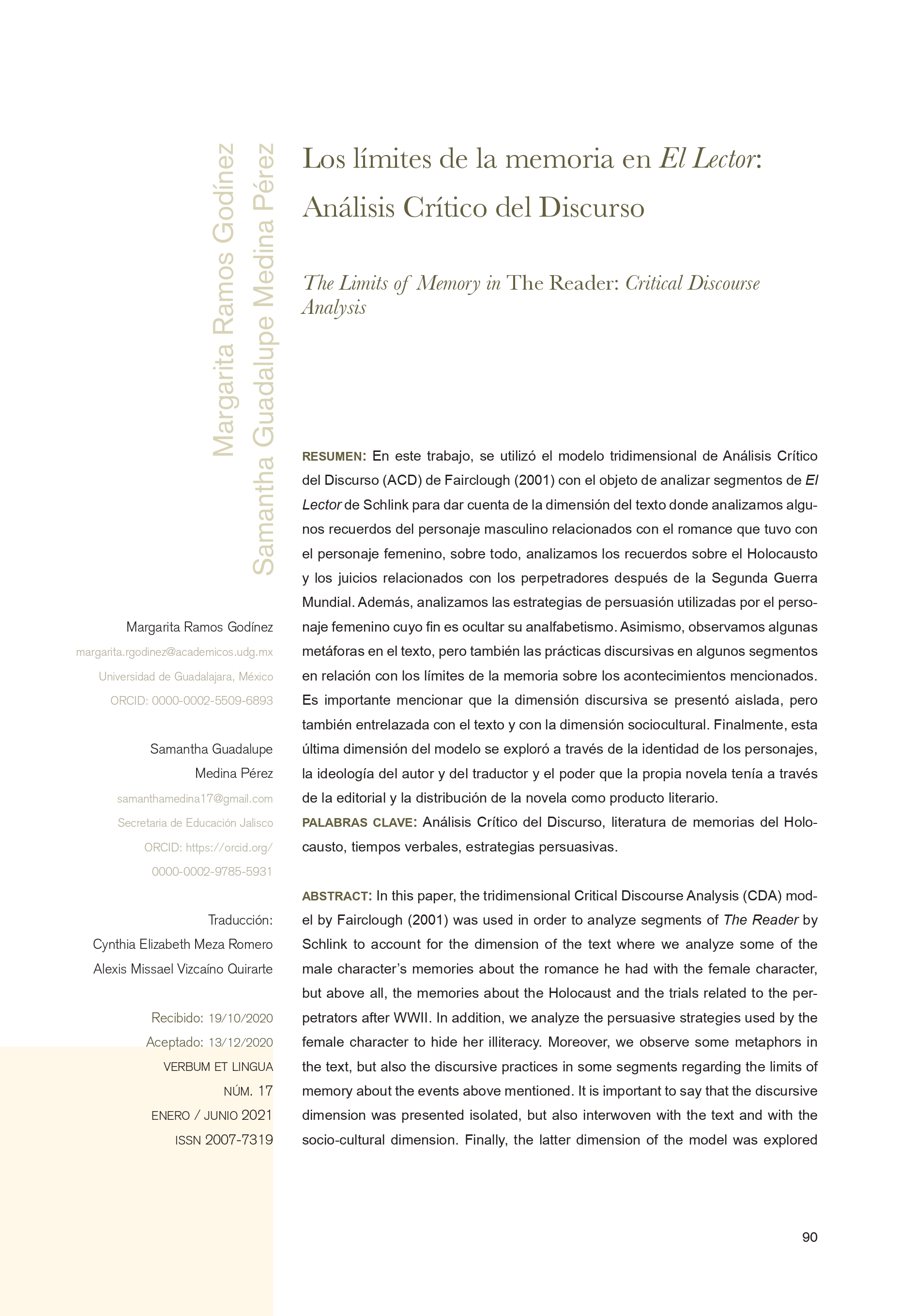Los límites de la memoria en El Lector: Análisis Crítico del Discurso
DOI:
https://doi.org/10.32870/vel.vi17.248Parole chiave:
Análisis Crítico del Discurso, literatura de memorias del Holocausto, tiempos verbales, estrategias persuasivasAbstract
En este trabajo, se utilizó el modelo tridimensional de Análisis Crítico del Discurso (ACD) de Fairclough (2001) con el objeto de analizar segmentos de El Lector de Schlink para dar cuenta de la dimensión del texto donde analizamos algunos recuerdos del personaje masculino relacionados con el romance que tuvo con el personaje femenino, sobre todo, analizamos los recuerdos sobre el Holocausto y los juicios relacionados con los perpetradores después de la Segunda Guerra Mundial. Además, analizamos las estrategias de persuasión utilizadas por el personaje femenino cuyo fin es ocultar su analfabetismo. Asimismo, observamos algunas metáforas en el texto, pero también las prácticas discursivas en algunos segmentos en relación con los limites de la memoria sobre los acontecimientos mencionados. Es importante mencionar que la dimensión discursiva se presentó aislada, pero también entrelazada con el texto y con la dimensión sociocultural. Finalmente, esta última dimensión del modelo se exploró a través de la identidad de los personajes, la ideología del autor y del traductor y el poder que la propia novela tenia a través de la editorial y la distribución de la novela como producto literario.
Downloads
Metriche

Downloads
Pubblicato
Versioni
- 2024-04-17 (5)
- 2024-04-16 (4)
- 2024-04-16 (3)
- 2020-12-31 (2)
- 2024-03-15 (1)












